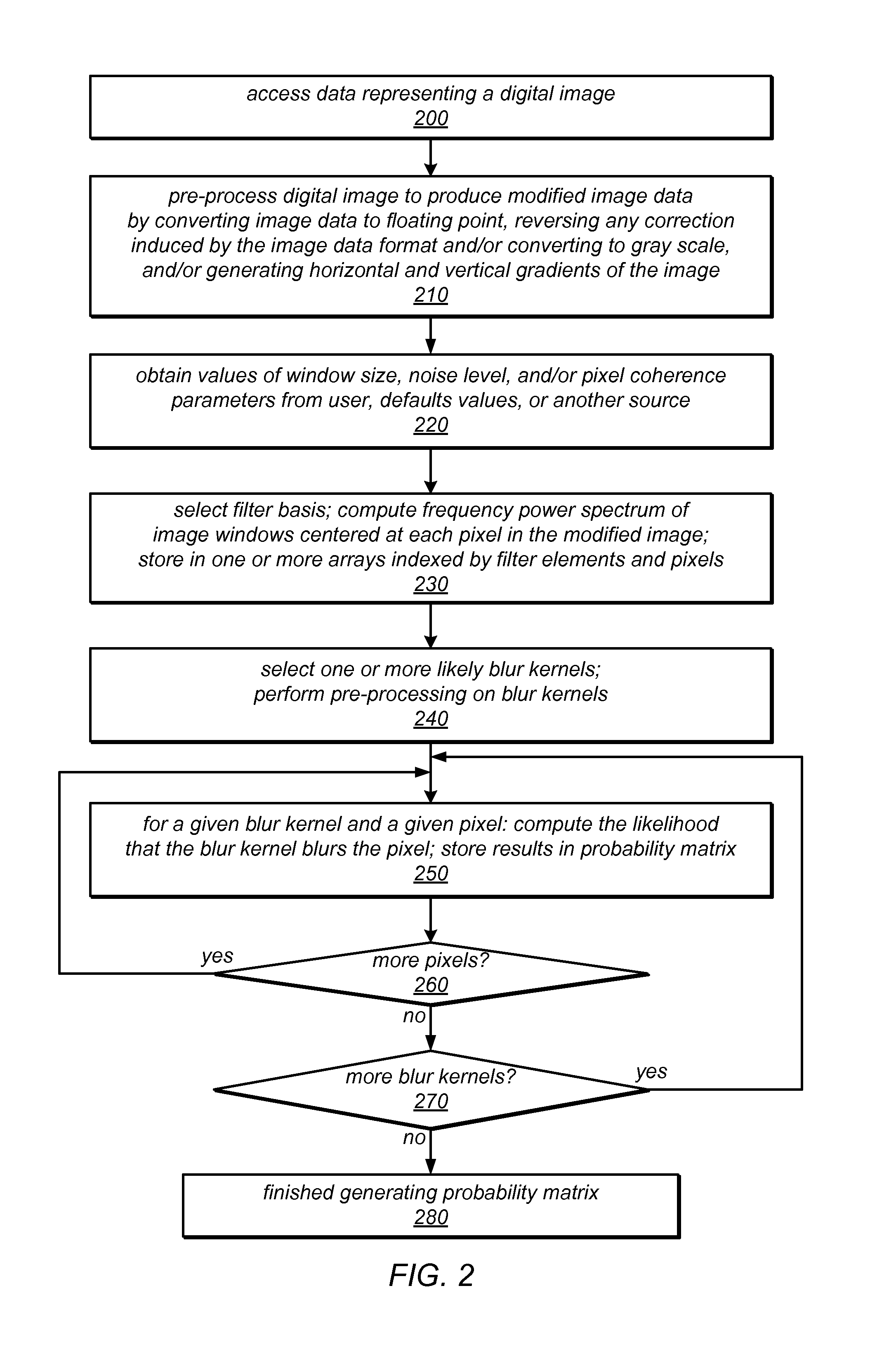System and Method for Estimating Spatially Varying Defocus Blur in a Digital Image
a digital image and spatially variable technology, applied in image enhancement, image analysis, instruments, etc., can solve the problems of blur assumption, defocus blur, limited depth of field of digital imaging system, etc., and achieve the effect of reducing the computational cost of a given blur estimation exercis
- Summary
- Abstract
- Description
- Claims
- Application Information
AI Technical Summary
Benefits of technology
Problems solved by technology
Method used
Image
Examples
experimental examples
[0213]Two experiments that employ the systems and techniques described herein for blur map generation involving simulated images and one experiment involving a real image are illustrated in FIGS. 14A-14D, 15A-15D, and 16A-16B. In each of these experiments, the illustrated blur maps represent different blur kernel radius values using different colors, according to a corresponding blur map legend. In these examples, each of the blur map legends maps different colors to radius values in the range [0,8]. In the first experiment, FIG. 14A illustrates a simulated input image 1400 that includes an in-focus subject and out-of-focus background. More specifically, the portion of the image inside the square in the center of input image 1400 is completely un-blurred, and the background of input image 1400 has been blurred by a disc kernel having a radius r=5. In this example, input image 1400 was generated by superimposing a small, sharp image over larger image that was blurred. In this example...
example implementations
[0222]FIG. 17 is a block diagram illustrating various modules that may implement the blur state classification and / or coherent blur map generation techniques described herein, according to some embodiments. For example, FIG. 17 illustrates a blur classification module 1720 that may implement one or more of the image editing techniques and tools described herein. Module 1720 may, for example, implement one or more of: input image pre-processing, image window pre-processing (e.g., computing the power frequency spectrum of image windows), blur kernel pre-processing (e.g., computing the frequency power spectrum for each blur kernel), blur classification probability matrix generation, preliminary blur map estimation, coherent blur map generation, binary segmentation, and / or depth estimation. FIG. 18 illustrates an example computer system on which embodiments of module 1720 may be implemented. Module 1720 may receive as input one or more digital images 1710. Example input images are shown...
PUM
 Login to View More
Login to View More Abstract
Description
Claims
Application Information
 Login to View More
Login to View More - R&D
- Intellectual Property
- Life Sciences
- Materials
- Tech Scout
- Unparalleled Data Quality
- Higher Quality Content
- 60% Fewer Hallucinations
Browse by: Latest US Patents, China's latest patents, Technical Efficacy Thesaurus, Application Domain, Technology Topic, Popular Technical Reports.
© 2025 PatSnap. All rights reserved.Legal|Privacy policy|Modern Slavery Act Transparency Statement|Sitemap|About US| Contact US: help@patsnap.com



